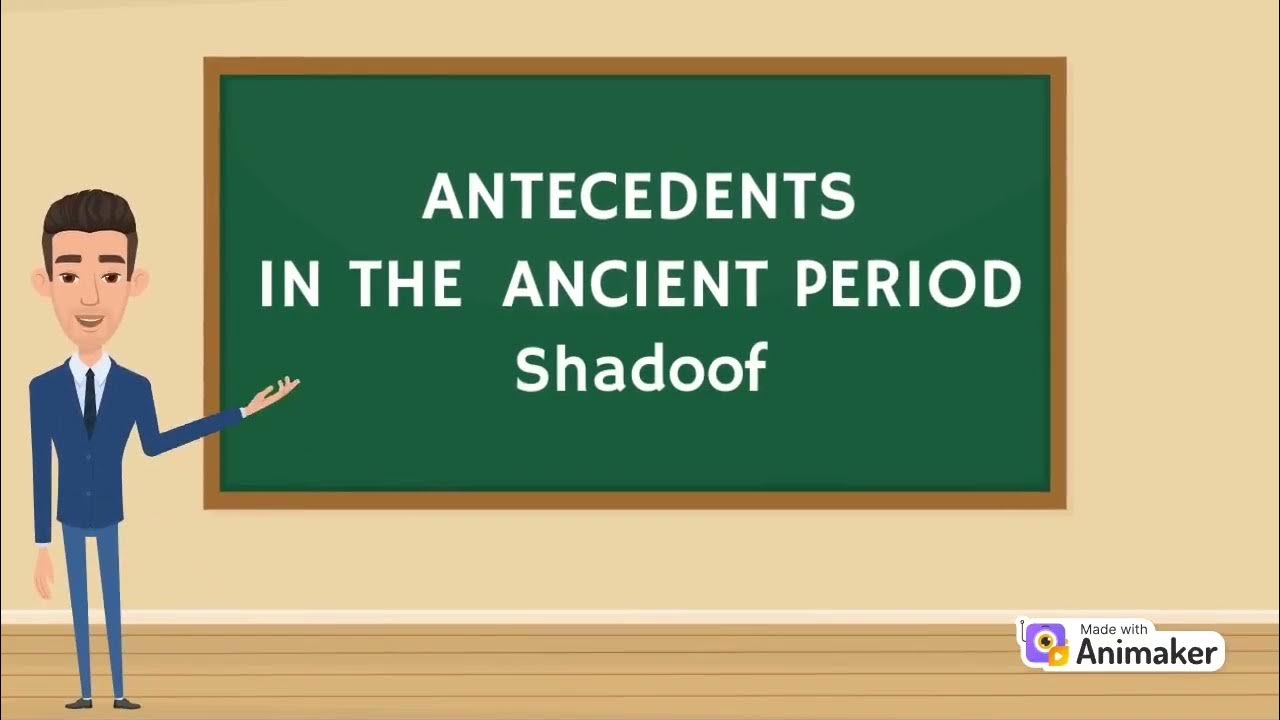The Antikythera Mechanism: The Ancient Greek Super Computer
Summary
TLDRThe Antikythera mechanism, discovered in a shipwreck in 1901, is an ancient Greek analog computer dating back to the 1st century BC. Initially dismissed as a fake, it was later revealed to be an intricate device with at least 40 gears, capable of calculating celestial positions, predicting eclipses, and even the timing of Olympic Games. This remarkable piece of technology predates Western European mechanical clocks by over a millennium and challenges our understanding of ancient Greek astronomy and engineering prowess.
Takeaways
- 🌐 The Antikythera mechanism is an ancient Greek analog computer, predating digital computers by over a millennium.
- 🕰️ It was discovered in a shipwreck near Antikythera, Greece, in 1901, challenging the timeline of technological development.
- 🔍 Initially dismissed as a fake, it took until the mid-20th century for researchers to unravel its complex astronomical and calendrical functions.
- 📚 The device is believed to be an educational tool, used to demonstrate the motion of celestial bodies and predict astronomical events.
- 🔧 Constructed of at least 40 gears, it could calculate the positions of known planets, the moon, and predict eclipses and Olympic Games dates.
- 🛠️ The mechanism's precision suggests that it was not a one-off creation but possibly part of a lineage of sophisticated clock-making in ancient Greece.
- 🧩 It includes 'complications' for fine-tuning the observed motion of celestial bodies, which were not fully understood by the Greeks.
- 🌌 The device's design assumes a geocentric model of the universe, using epicycles to represent the motion of celestial objects around Earth.
- 🔬 Modern analysis using X-rays and CT scans has revealed the internal workings and the advanced knowledge of astronomy and mechanics embedded within.
- 🏺 The Antikythera mechanism was likely made of bronze, which may explain the scarcity of similar devices, as they were not meant to last indefinitely.
- 🤔 The existence of such a complex device raises questions about what other advanced technologies the ancient Greeks may have developed and lost to history.
Q & A
What is an analog computer, and how does it differ from a digital computer?
-An analog computer is a computational device that uses mechanical principles to make calculations, rather than using digital mathematics like digital computers which operate in binary code (ones and zeros).
When were the first analog computers believed to have been invented?
-The first analog computers, mostly astronomical clocks, were believed to have been invented around the 14th century.
What significant discovery was made near Antikythera in Greece in 1901?
-In 1901, a significant discovery was made near Antikythera, Greece: an ancient shipwreck containing numerous Greco-Roman artifacts, including a mysterious box that turned out to be an ancient analog computer, now known as the Antikythera mechanism.
What did the mysterious box found in the shipwreck initially appear to be?
-The mysterious box initially appeared to be little more than a corroded lump of bronze and wood.
Who first noted the significance of the gear wheel embedded in the rock, and what did he theorize?
-Valerios Stais, an archaeologist at the Athens Museum, first noted the gear wheel and theorized that the device must have been some sort of ancient astronomical clock.
What were Derek de Solla Price and Charalambos Karakalos' contributions to understanding the mechanism?
-Derek de Solla Price and Charalambos Karakalos used x-ray technology to examine the internal workings of the mechanism, producing detailed images of its 82 fragments and revealing its complex design.
What capabilities did the Antikythera mechanism possess?
-The Antikythera mechanism could calculate the exact position and size of the moon over an 18-year period, predict eclipses, show the positions of planets, and indicate the timing of the ancient Olympic Games, among other functions.
How did the mechanism's construction challenge previous assumptions about ancient Greek technology?
-The mechanism's complex design and precise craftsmanship indicated that the ancient Greeks had a far greater mastery of mechanical miniaturization and astronomical knowledge than previously thought.
What modern technologies are being used to study the Antikythera mechanism today?
-Modern technologies such as microfocus x-ray computer tomography (CT scans) and polynomial texture mapping (PTM) are being used to study the Antikythera mechanism.
Why do some believe the Antikythera mechanism may not have been a unique device?
-The precision and complexity of the Antikythera mechanism suggest that it was not the result of a lone experimenter but rather the product of an experienced maker or specialized workshop, indicating that similar devices might have existed.
What broader implications does the discovery of the Antikythera mechanism have for our understanding of ancient technology?
-The discovery of the Antikythera mechanism suggests that ancient Greeks had advanced technological and astronomical knowledge, challenging previous assumptions about the extent of their scientific and mechanical capabilities.
Outlines

This section is available to paid users only. Please upgrade to access this part.
Upgrade NowMindmap

This section is available to paid users only. Please upgrade to access this part.
Upgrade NowKeywords

This section is available to paid users only. Please upgrade to access this part.
Upgrade NowHighlights

This section is available to paid users only. Please upgrade to access this part.
Upgrade NowTranscripts

This section is available to paid users only. Please upgrade to access this part.
Upgrade NowBrowse More Related Video

STS ANTECEDENTS IN THE ANCIENT PERIOD

The Most Powerful Computers You've Never Heard Of

Ancient Greek Inventions That Are Still Used Today

The Mystery of the World‘s First Computer

Antikythera Mechanism: The ancient 'computer' that simply shouldn't exist - BBC REEL

How the Ancients Predicted Eclipses 3,000 Years Ago
5.0 / 5 (0 votes)